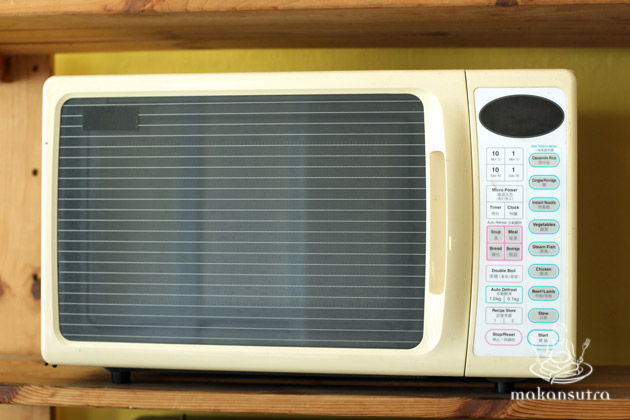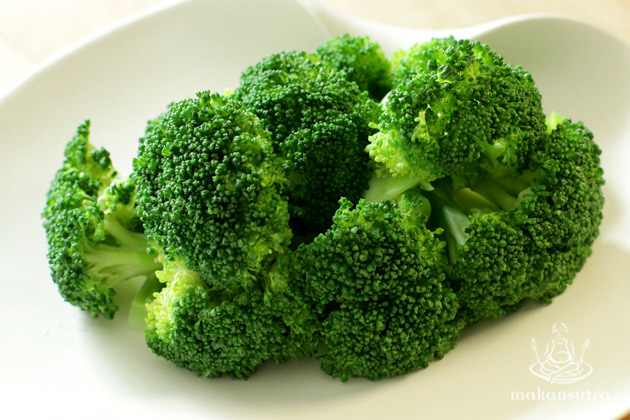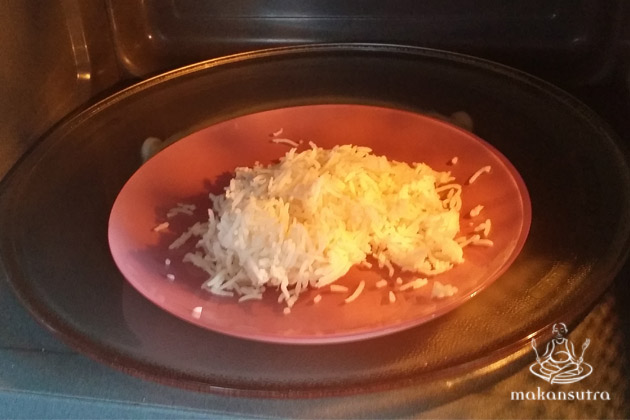
Microwave food debate: Is it safe
By Shoba Nair - Thursday, Jul 09, 2015
The debate rages on. I use the microwave quite often, mainly for reheating the leftovers in the refrigerator or for quickly melting the chocolate chips for my brownies. This is highly disapproved by the men in my family, though. My father, for one, believes that microwaved food can be cancer-causing and my husband, on the other hand, says that microwaving reduces the food’s nutritional value and alters the taste.
Surprisingly, I found that they were far from being the odd ones out in the debate about microwave food. Let’s unearth some facts and debate this.
Does microwaved food cause cancer?
The cancer myth, threaded together with the threat of radiation, is as it is – a myth.
To wholeheartedly dispel this toxic rumour, you would need to understand how the microwave oven works. In the microwave oven, there is an electronic tube called a magnetron, which emits the electromagnetic radiation to heat or cook your food. The water molecules in your food absorb this microwave energy and the friction between the molecules helps to generate the heat to cook your food.
That explains why food with high water content, like spinach, cooks very quickly in a microwave. And no, the radiation that is dispersed does not make the food “radioactive”, as verified by the World Health Organisation (WHO), since the microwave energy is converted to heat energy and not stored in your food or even in the oven once the oven is switched off.
So, yes, microwaved food is 100% safe.
Of course, if you choose to rebel against the advice stated in the oven’s instruction manual by using plastic containers (which are not certified to be microwave-safe) to heat up your food or switching on the oven when there is no food in there, then, you would be trying to tweak the myth into a fact.
Does microwaved food alter the nutrient make-up of food?
Researchers give microwaved food the thumbs-up for good health.
The best way to retain the nutrients of your food is to cook them quickly. This is exactly what microwave cooking does, since the heat is generated much faster than traditional cooking methods like boiling or frying. Researchers at Food Science Australia say that because food gets heated much more quickly, the nutrients, especially water-soluble vitamins B and C, are better retained. A study published in the Journal of Agricultural and Food Chemistry also points out that microwaving is the best cooking method as it maintains the colour and even the cancer-fighting phytochemicals in Brussels sprouts.

However, you would not want to add too much water when cooking your food in the microwave or heat it for too long. Research on microwave cooking process (in the Journal of Agricultural and Food Chemistry) also points out that the longest microwave cooking time and the higher volume of cooking water should be avoided to minimize losses of nutrients. After all, that would defeat the whole purpose of microwaving, since microwave cooking is synonymous with high-speed cooking with minimum water.
Does microwaved food taste different?
Unfortunately, the microwaved food does not pass the taste test with flying colours, at least not for all foods.
Compared to a stove or conventional oven, microwave energy is stronger. The microwaves thus heat the water molecules a lot faster, and this could subsequently result in water evaporating more quickly than you would like it to, leaving some foods dry or rubbery.
Thus, when you heat up, say, leftover rice, which have little water content, in the microwave, the resulting rice could turn out to be drier and harder. However, experience (and science) tells me that if you sprinkle a little water on the rice before heating it on the microwave oven, it turns out to be almost perfect.

The other problem you may face with microwaved food is uneven heating. The microwaves in the oven are not evenly dispersed, even with the glass turntable to partially overcome this shortcoming. The food is also cooked or heated from the outside in. Thus, you may find that your thick slab of chicken breast is very hot on the outside, but still a little cold inside. One way to counteract this is to not immediately serve the chunky food after it is heated in the microwave. Instead, let it rest so that the heat can slowly dissipate to other parts first.
The verdict
It is clear that the sleek microwave oven is a safe and healthy way to cook. You just have to take note of the misses in taste for certain kinds of food due to the drying effect, and try experimenting to see if sprinkling water would work for those foods.

As for me, I will still use my microwave oven to reheat, and perhaps venture into “steaming” my vegetables in there too, albeit with little water and low cooking time. As for making my aromatic chicken curry, I think my faithful stove would do for now.


